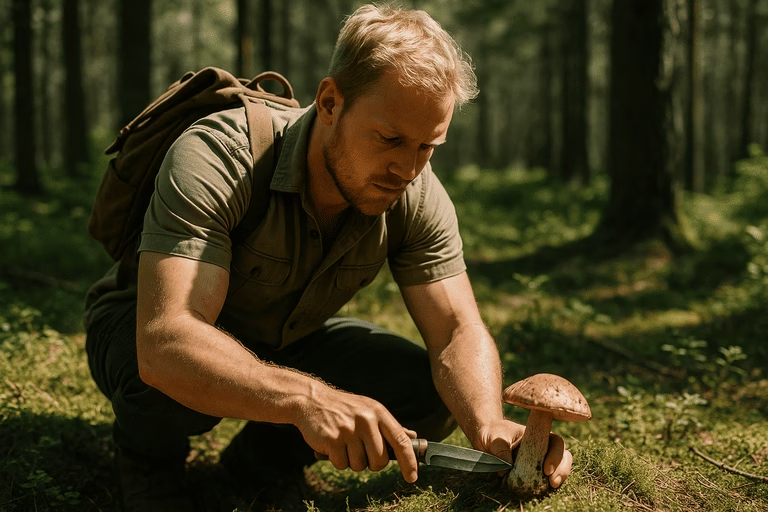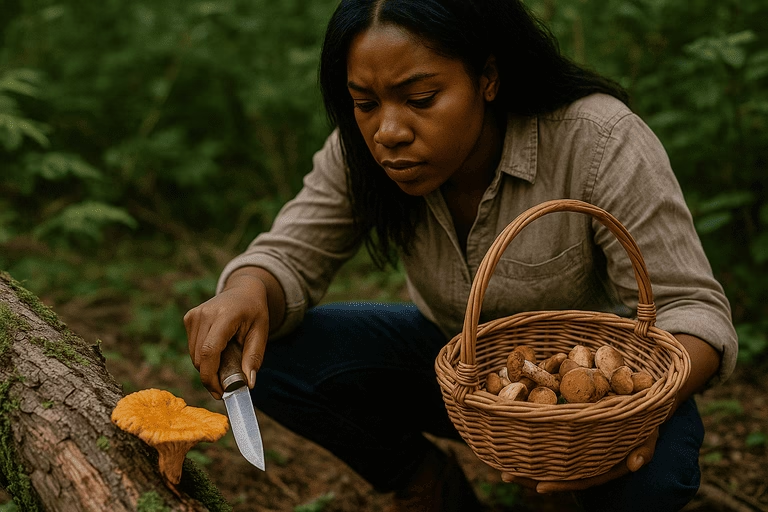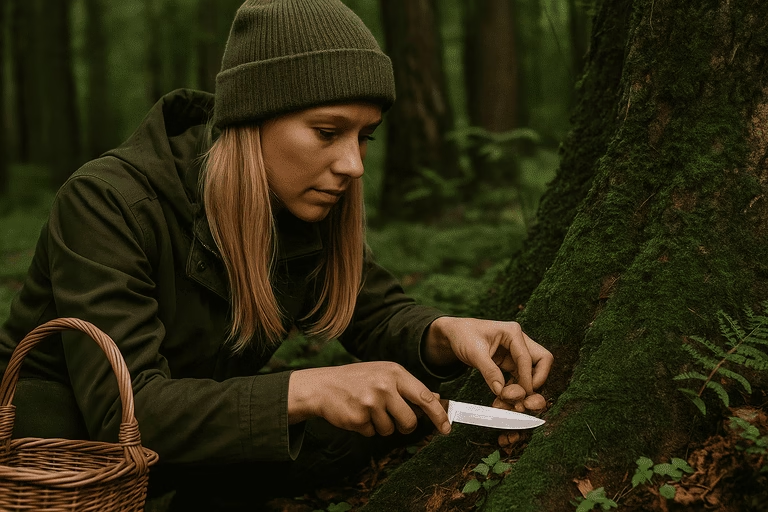In the world of wilderness survival and bushcraft, the foraging knife is one of the most vital tools you can carry. Whether you’re harvesting mushrooms, slicing through thick root systems, or trimming herbs, a quality foraging knife enables you to do the job efficiently, safely, and respectfully. Unlike general-purpose knives, a well-designed foraging knife caters to the delicate and precise work required in the wild.
When you’re deep in the forest or exploring rugged terrain, the ability to cleanly cut plant material without damaging it is crucial. Foraging often requires a surgical level of precision, and dull or oversized tools just won’t suffice. In addition, using the proper knife helps ensure the sustainability of your harvesting efforts, allowing plants to regrow and continue supporting the ecosystem around them.
Choosing the Right Foraging Knife for Your Needs
Selecting the best foraging knife depends on multiple factors, including your skill level, the type of plants you intend to harvest, and the environment you’re navigating. For instance, if you primarily forage for mushrooms, a curved blade with a brush on the handle may serve you best. This type of knife allows you to clean and trim specimens without breaking them. However, root and bark harvesting may require a sturdier, thicker blade.
Blade material is also an important consideration. Stainless steel resists rust and is easier to maintain in humid conditions, while high-carbon steel offers a sharper edge and longer lifespan—provided you maintain it well. In addition, handle design matters. Look for textured grips or wooden handles that won’t slip in wet or muddy conditions. Your knife should feel like a natural extension of your hand, balanced and comfortable during prolonged use.
Therefore, taking the time to test and compare different models before committing can save you discomfort and inefficiency later. A foraging knife is more than just a cutting tool—it’s a survival partner.
How to Safely Use and Maintain a Foraging Knife
Proper use of your foraging knife ensures both your safety and the integrity of the plants you’re harvesting. Always keep your blade sharp; a dull knife requires more force and increases the risk of slipping. Use short, controlled movements rather than long, sweeping cuts. When working with roots or thick stems, take care to angle your blade away from your body.
In addition, always be aware of your surroundings. Cutting too close to your hand or in unstable positions can lead to serious injury, especially in remote locations. As for maintenance, clean your knife after each outing to prevent rust and buildup of plant sap. A simple wipe-down with a damp cloth and occasional oiling will keep your tool in top condition. Store it in a sheath when not in use to protect both the blade and yourself.
By using your knife mindfully and maintaining it regularly, you extend its lifespan and preserve its effectiveness. Survival gear, like your foraging knife, should always be respected and cared for accordingly.

Building a Lightweight and Efficient Foraging Kit
The foraging knife is central to a well-prepared foraging kit, but it’s far from the only tool you’ll need. A compact field guide helps with plant identification, while paper or mesh bags allow for organized storage. Gloves protect your hands from thorns and irritants, and a brush (often built into mushroom knives) lets you clean dirt from your finds on the spot.
In addition, a folding hand trowel or hori-hori knife can be useful for digging up roots or bulbs. However, if you already have a high-quality foraging knife with a strong tip, that may cover your digging needs. Weight matters in the field, so choose multi-functional tools when possible. Organize everything in a small, breathable backpack or foraging basket, making sure your knife is stored safely but is also easily accessible.
By planning your kit carefully and centering it around your foraging knife, you reduce unnecessary weight while maximizing utility. This is especially important on long treks or when foraging in challenging terrain.
Legal and Ethical Considerations for Carrying a Foraging Knife
Carrying a knife, even for survival purposes, comes with legal responsibilities. Knife laws vary from region to region, so always research local regulations before bringing your foraging knife into public spaces or protected areas. In some jurisdictions, even fixed-blade knives intended for outdoor use may be restricted without proper justification.
In addition, always forage with permission when on private land, and follow ethical guidelines when gathering in public or shared spaces. Never take more than you need, and avoid damaging roots unless you know the plant can recover. Practicing sustainable harvesting means using your knife to take only what is viable, and doing so with care and respect for the ecosystem.
Therefore, knowledge of both the law and sustainable practices will ensure your foraging remains a responsible and enriching activity.
In the world of wilderness survival and bushcraft, the foraging knife is one of the most vital tools you can carry. Whether you’re harvesting mushrooms, slicing through thick root systems, or trimming herbs, a quality foraging knife enables you to do the job efficiently, safely, and respectfully. Unlike general-purpose knives, a well-designed foraging knife caters to the delicate and precise work required in the wild.
When you’re deep in the forest or exploring rugged terrain, the ability to cleanly cut plant material without damaging it is crucial. Foraging often requires a surgical level of precision, and dull or oversized tools just won’t suffice. In addition, using the proper knife helps ensure the sustainability of your harvesting efforts, allowing plants to regrow and continue supporting the ecosystem around them.

Choosing the Right Foraging Knife for Your Needs
Selecting the best foraging knife depends on multiple factors, including your skill level, the type of plants you intend to harvest, and the environment you’re navigating. For instance, if you primarily forage for mushrooms, a curved blade with a brush on the handle may serve you best. This type of knife allows you to clean and trim specimens without breaking them. However, root and bark harvesting may require a sturdier, thicker blade.
Blade material is also an important consideration. Stainless steel resists rust and is easier to maintain in humid conditions, while high-carbon steel offers a sharper edge and longer lifespan—provided you maintain it well. In addition, handle design matters. Look for textured grips or wooden handles that won’t slip in wet or muddy conditions. Your knife should feel like a natural extension of your hand, balanced and comfortable during prolonged use.
Therefore, taking the time to test and compare different models before committing can save you discomfort and inefficiency later. A foraging knife is more than just a cutting tool—it’s a survival partner.
How to Safely Use and Maintain a Foraging Knife
Proper use of your foraging knife ensures both your safety and the integrity of the plants you’re harvesting. Always keep your blade sharp; a dull knife requires more force and increases the risk of slipping. Use short, controlled movements rather than long, sweeping cuts. When working with roots or thick stems, take care to angle your blade away from your body.
In addition, always be aware of your surroundings. Cutting too close to your hand or in unstable positions can lead to serious injury, especially in remote locations. As for maintenance, clean your knife after each outing to prevent rust and buildup of plant sap. A simple wipe-down with a damp cloth and occasional oiling will keep your tool in top condition. Store it in a sheath when not in use to protect both the blade and yourself.
By using your knife mindfully and maintaining it regularly, you extend its lifespan and preserve its effectiveness. Survival gear, like your foraging knife, should always be respected and cared for accordingly.
Building a Lightweight and Efficient Foraging Kit
The foraging knife is central to a well-prepared foraging kit, but it’s far from the only tool you’ll need. A compact field guide helps with plant identification, while paper or mesh bags allow for organized storage. Gloves protect your hands from thorns and irritants, and a brush (often built into mushroom knives) lets you clean dirt from your finds on the spot.
In addition, a folding hand trowel or hori-hori knife can be useful for digging up roots or bulbs. However, if you already have a high-quality foraging knife with a strong tip, that may cover your digging needs. Weight matters in the field, so choose multi-functional tools when possible. Organize everything in a small, breathable backpack or foraging basket, making sure your knife is stored safely but is also easily accessible.
By planning your kit carefully and centering it around your foraging knife, you reduce unnecessary weight while maximizing utility. This is especially important on long treks or when foraging in challenging terrain.

Legal and Ethical Considerations for Carrying a Foraging Knife
Carrying a knife, even for survival purposes, comes with legal responsibilities. Knife laws vary from region to region, so always research local regulations before bringing your foraging knife into public spaces or protected areas. In some jurisdictions, even fixed-blade knives intended for outdoor use may be restricted without proper justification.
In addition, always forage with permission when on private land, and follow ethical guidelines when gathering in public or shared spaces. Never take more than you need, and avoid damaging roots unless you know the plant can recover. Practicing sustainable harvesting means using your knife to take only what is viable, and doing so with care and respect for the ecosystem.
Therefore, knowledge of both the law and sustainable practices will ensure your foraging remains a responsible and enriching activity.

